Dee Estuary Birding
Monthly Newsletter...
May 2021 Newsletter
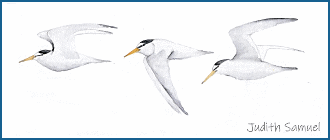
Little Terns at Gronant and Point of Ayr
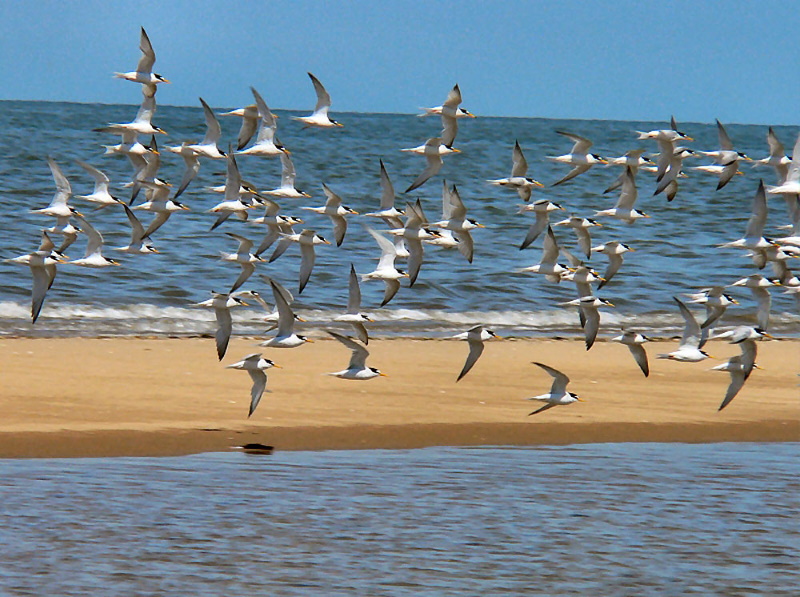
This was voted best photo in my 'My Top Ten Favourite Bird Photographs' competition (see http://www.deeestuary.co.uk/news0121.htm).
When the first lockdown was announced in late March
2020 I was obviously concerned about my own and my family's safety
regarding Covid 19, but I have to admit one of my first thoughts was
for the Little Terns. I assumed that there would be no wardening or
fencing at Gronant which would result in a free for all for the foxes
with no successful nesting. But I needn't have worried as the
Denbighshire Countryside Service (DSC) stepped in, erecting electric
fencing around the colony and providing their own wardening cover - all
whilst social distancing
The DSC staff did a fantastic job but had a tough time of it, as did the terns. There were big high tides, storms, sand blow and predation, particularly by foxes. All this resulted in just 89 nesting pairs and 31 fledged young, compared to 162 pairs and 206 young in 2019. This might seem like a disaster but fluctuating fortunes are typical for Little Tern colonies; they are long lived birds and can easily cope with the odd poor season. To put it into perspective, this comes on the back of 10 record, or near record breaking, seasons in terms of ever increasing number of pairs, and over the past four years of high productivity in terms of fledged young - as you can see in the graph below.

But there is another story to be told here.
After storms in early June 21 pairs started nesting at Point of Ayr and
successfully raised 28 fledglings with the help of the RSPB who erected
fencing and arranged wardening. This can be regarded as a sub-colony of
Gronant and I've added these totals in the graph above (the red and
purple dots) which makes the 2020 season a bit more respectable.
Here is the Point of Ayr Little Tern Report 2020 kindly sent to me by Liz Boone (RSPB):
Point
of Ayr Little Tern report 2020
We are very happy to announce our
most successful year ever at the Point of Ayr. We recorded 28
fledglings in total from 21 nests, beating the previous best year,
which was last year with 6 fledglings from 3 nests. Due to reduced
resources this year due to Covid restrictions, the number of eggs were
not counted. A total of 12 chicks were ringed with 11 receiving colour
rings.
No predation events were recorded,
however a peregrine with two juveniles were seen regularly near the
colony, and were seen to attempt predation of the newly fledged birds,
but were unsuccessful. A Kestrel was also sighted but no predation was
attempted. There was also no evidence of foxes being present.
We were helped by ENI (PoA Gas
Terminal) this year to put the electric fence up. Our terns were
wardened tirelessly day in day out by RSPB volunteers, and volunteers
from the North Wales Little Tern Group, and this was carried out from
late June till early August, adding up to an amazing total of 320
volunteer hours. We would like to say a massive thank you to the North
Wales Little Tern Group and our volunteers for all your help we simply
wouldn’t have had this success without all your dedication.
Voluntary Wardens needed at both Gronant and Point of Ayr
As I write this in mid-April we have just heard that
the easing of Covid 19 restrictions means that voluntary wardens will
be allowed at both Gronant and Point of Ayr, which is great news.
For Gronant wardening please contact the North Wales
Little Tern Group (nwlittletern@gmail.com) or ring Denbighshire
countryside Services (01745 356197), but also feel free to just turn up
at Gronant and chat to the wardens on duty - wardening will have
started by the fourth week in May. Also see article on North Wales
Little Tern Group - http://www.deeestuary.co.uk/news0618.htm and
Gronant site Guide (which is a few years old but still mostly
relevant!) - http://www.deeestuary.co.uk/news0609.htm.
For Point of Ayr wardening contact Liz Boone (RSPB) by email - elizabeth.boone@rspb.org.uk.
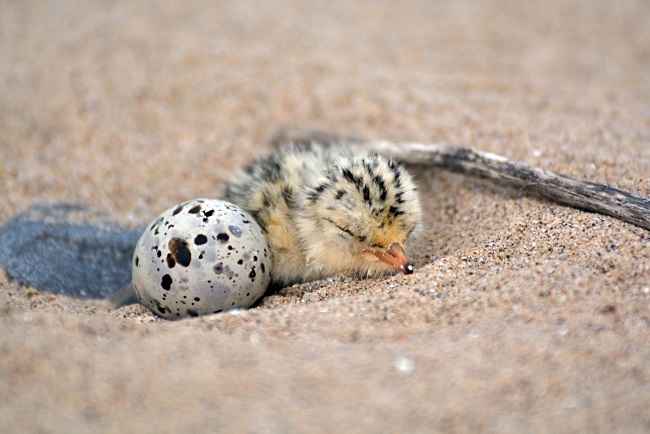
Richard Smith
Colour Ring Report
Blackbird
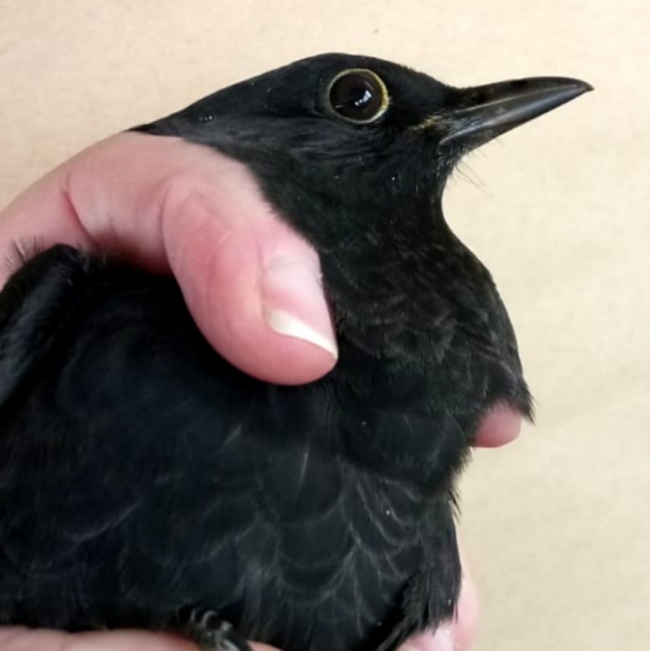
Blackbird isn't a species normally associated with this ringing
report but this was a particularly interesting recovery and ringed in a
sea-front garden in Hoylake.
Ringed with metal ring LN63843 at Hoylake on 29/11/2020.
Recovered alive in Vestby, Norway (just south of Oslo) on 8/04/2021,
straight line distance is 1095Km.
Black-tailed Godwits
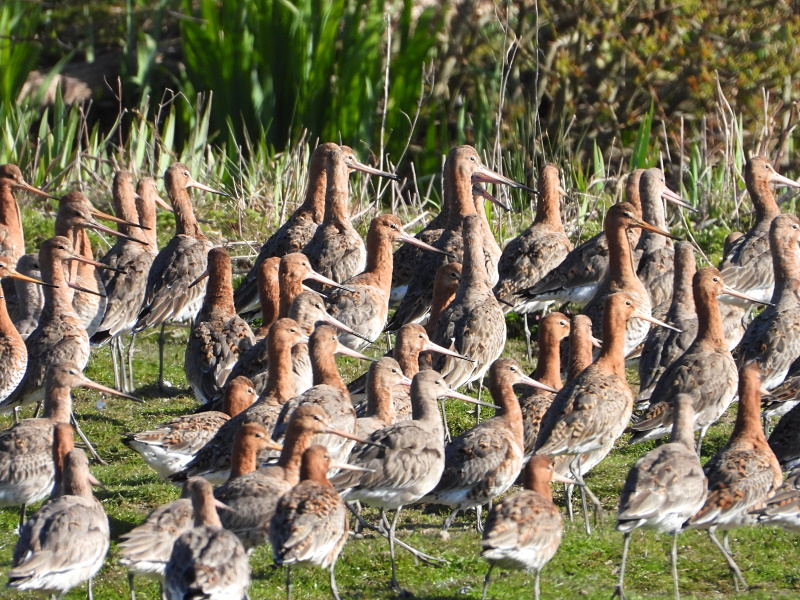
It was lovely seeing the northward passage of
Black-tailed Godwits with many in full summer plumage but it wasn't
very productive for colour-ringed birds with just two recorded, as
follows:
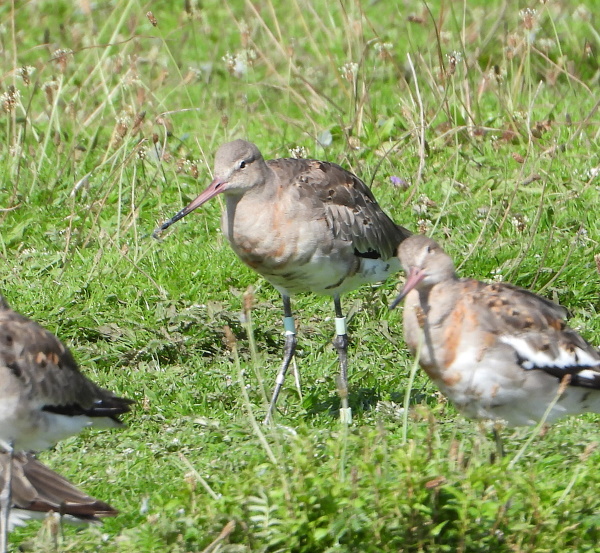
Ringed in southern Iceland on 17/06/2003.
In June this bird will be 18 years old. The longevity record for Black-tailed Godwits is 23 years old, but 18 is still an exceptional age for this species.
This bird has been recorded a total of 262 times, and since 2005 it has only ever been seen away from the Dee Estuary when it visited the Ribble Estuary in March 2019. I have seen it a total of 179 times which in itself must be some kind of record!
It was recorded four times at Caldy Wildfowl Collection in the second half of April 2021.
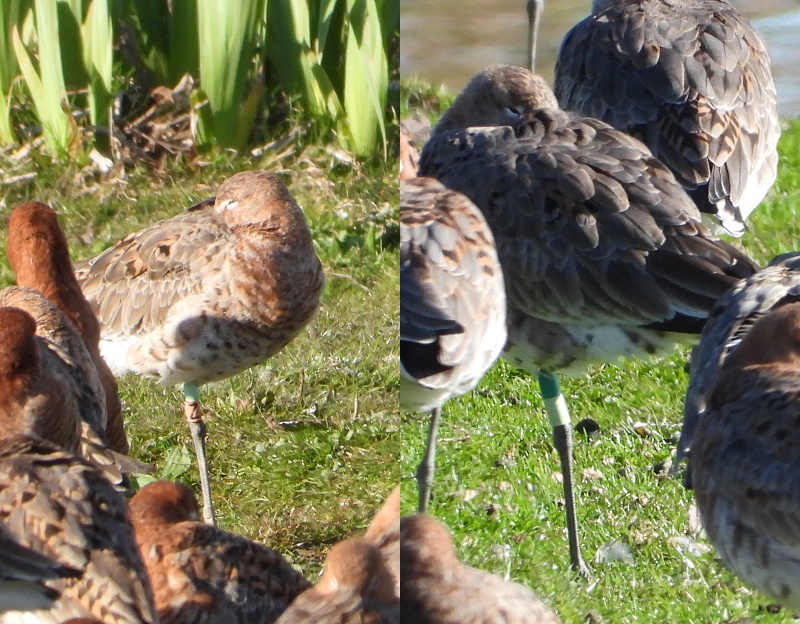
It was always standing on one leg!
GL-LZ.
Ringed in southern Iceland on 19/6/2014 as an adult female.
The first record after ringing was at the Gilroy Flash, West Kirby, in
November 2014 and it has been a regular on the Dee Estuary area since.
It usually flies to the east coast after breeding being seen at
Snettisham in September 2015, August 2016 and September 2018, and at
Frampton Marsh in August 2017. It then moves north-west and usually
spends most of October at Caldy Wildfowl Collection (2017, 2018 and
2020).
In April GL-LZ is normally a bit further north in Lancashire so it was
a bit of a surprise when it was spotted at Caldy Wildfowl Collection on
several occasions in April 2021.
Colour-rings were recorded by Richard Smith, Steve
Hinde and Jane Turner.
April Bird News

It was hard to take, a Collared Pratincole in Kerr's Field for over an
hour but news only got out after it had left! A truly mega rarity with
usually just the one bird a year visiting this country. A particularly
charismatic species - it is a wader but behaves more like a Swallow
(eating insects on the wing) and looks like a small tern in flight. It
was frustrating as they often stick around at the same site for several
days but there was no sign, then as I write this on May 1st I see it
has turned up on a ploughed field in Kirkby (north Liverpool)* so has
spent over a week in our area without being spotted. Collared
Pratincoles breed in good numbers in southern Spain and also along the
Mediterranean coast of France so it is probably an overshooting bird
from that population. *It is some
consolation that the bird at Kirkby was found by
Leasowe regular Eddie Williams, which was pretty amazing!
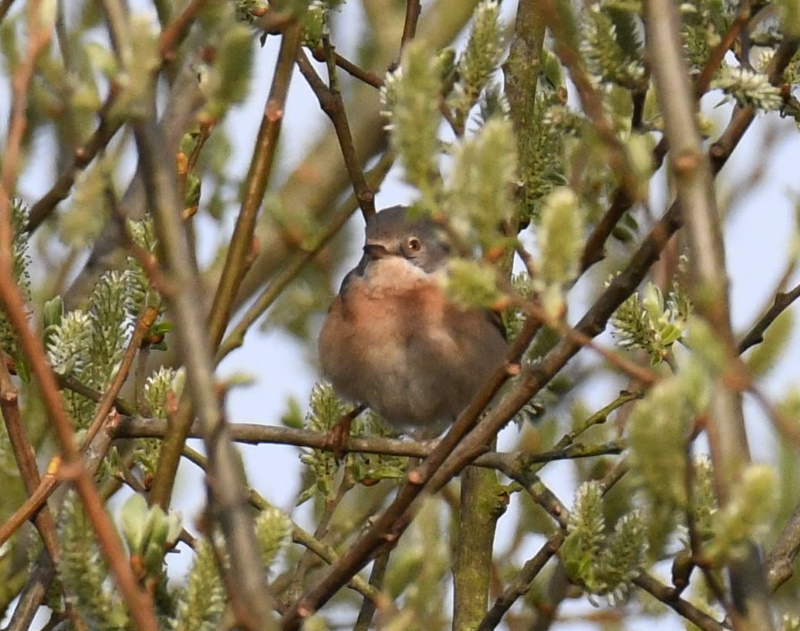
But there were similar stories for all our major
rarities in April. A Surf Scoter was briefly seen on the 1st sitting on
the sea at Ffynnongroyw, the birder who spotted it was on a train at
the time so this has to go down as only a 'probable'. Next up was an
over-flying
White Stork at Greasby on the 16th, seen by a couple of birders but it
wasn't visible from the coast so must have veered inland (it also flew
over Frodsham Marsh that same day). An 'unusual looking Whitethroat'
was photographed near Burton Point on the 19th, this turned out to be a
Sub-alpine Warbler but there was no sign of it the following day. About
the same time the Collared Pratincole was at Leasowe on the 22nd a
Serin flew along Hoylake shore, nobody saw it but it's distinctive call
was recorded as it flew over.
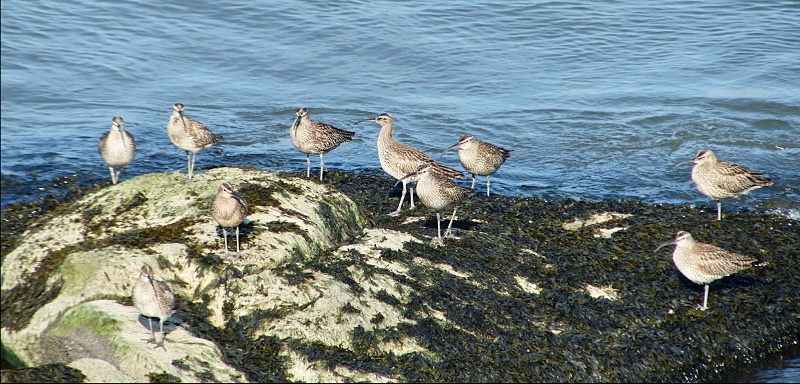
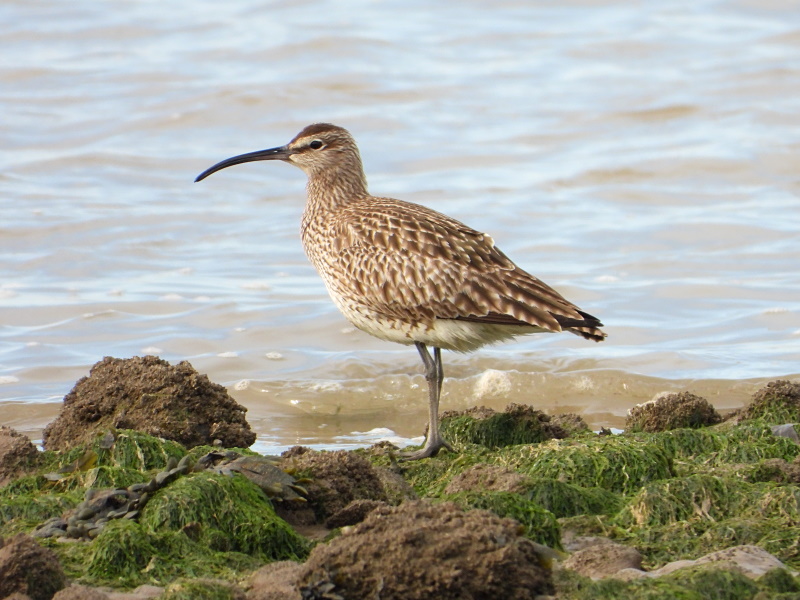
Bottom: on Caldy Shore on April 26th (Richard Smith)
April is all about the spring migration with many
species only seen here at this time. Whimbrels are a particular
favourite filling the estuary up with their whistling calls at a time
when few other waders are around. They are on their way from Africa to
Iceland and north-east Europe (see The
Seven Whistler article). The first was noted at Hilbre on the 10th
with 17 at Heswall on the 17th the first double-figure count. The high
tides at the end of the month produced very good numbers at Thurstaston
and Heswall, max 143 on the 30th, with 43 at Hilbre on the 28th.
Sunny weather always seems to be good for Ospreys
and we had a total of 12 over this spring - compared to eight in 2020
and 11 in 2019. At one point in April we seemed to be seeing them every
day.
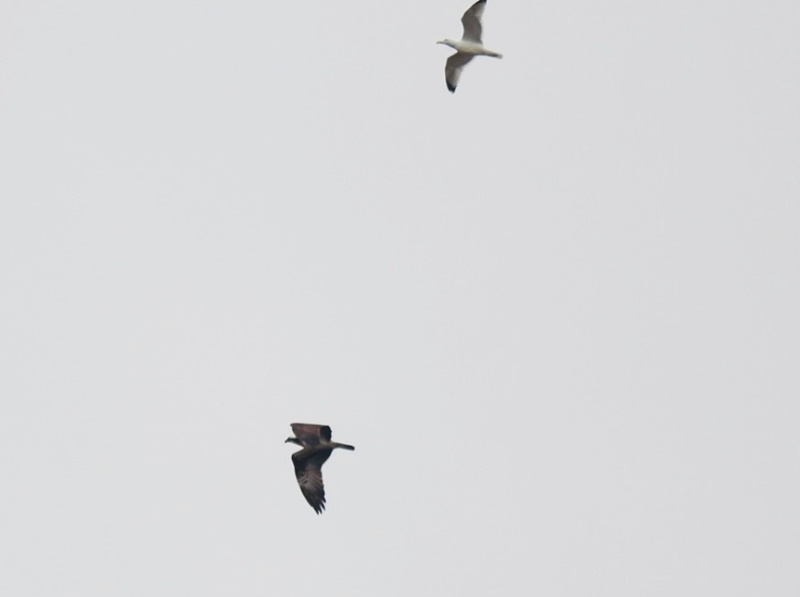
The exodus of Pink-footed Geese was certainly prolonged this year with the first obvious flight north on March 30th and the last recorded on April 28th. The total counted, always early morning, was 16,173. To that has to be added many more which will have been missed, and large numbers were heard overnight. For example on April 13th several large flocks were recorded over Hoylake at night including one which took seven minutes to pass over - at least 10,000 in that flock alone would seem a reasonable estimate. The Dee Estuary is rapidly becoming one of the top ten sites in the country for Pink-footed Geese, a remarkable turn around from 10 years or more ago when a total of a few hundred was considered a good count (max WeBS count for winter 2010/11 was 750). There were 24,000 counted for the February 2021 WeBS and March was likely to have been even higher. There is likely to be much inter-change between here and Norfolk where numbers usually peak in December at 40,000 to 50,000, and many of the birds recorded moving north in April may well have spent the winter there.
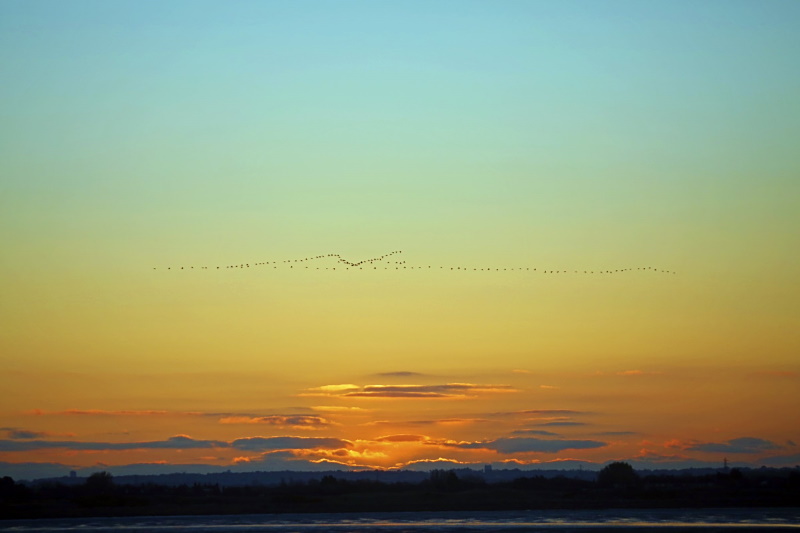
Out to sea Little Gulls continued to be seen flying past Hilbre with
several high counts, max 27 on the 4th. A lot of Gannets were out in
Liverpool Bay including a feeding flock of 150 close to the island on
the 25th. Over 400 Sandwich Terns on the 18th was a good number for
Spring, six Manx Shearwaters were seen on the same day.
With a blocking high pressure system and relatively
cold temperatures the passage of passerines was steady rather than
spectacular and the first of the species tabulated below all arrived
more or less as expected. The first Common Redstart arrived on the 11th
with a total of 28 records for the month, and the first Whinchat on the
15th with a total of 16.
| Species | 2021 | Location | 2020 | 2019 |
|---|---|---|---|---|
| Wheatear | 28th Feb |
Leasowe | 16th March |
27th Feb |
| Sand Martin | 5th March |
Burton | 16th March | 16th Feb |
| White Wagtail |
16th March | Leasowe | 1st March |
28th Feb |
| Swallow | 18th March | Leasowe | 23rd March | 21st March |
| Willow Warbler | 23rd March | Leasowe |
26th March | 24th March |
| House Martin | 27th March |
Burton | 5th April |
31st March |
| Whitethroat | 10th April | Heswall |
8th April | 14th April |
| Swift | 16th April |
Raby | 21st April | 23rd April |
| Cuckoo | 24th April |
Willaston |
23rd April | 18th April |
Five Spoonbills arrived at Parkgate on the 23rd, as
they all seemed to be in breeding plumage perhaps they'll breed here
this year. At Burton Mere Wetlands a Bittern was still being seen
regularly and Bearded Tits, Marsh Harriers, Cattle Egrets and
Mediterranean Gulls all appear to be breeding along with many other
species.
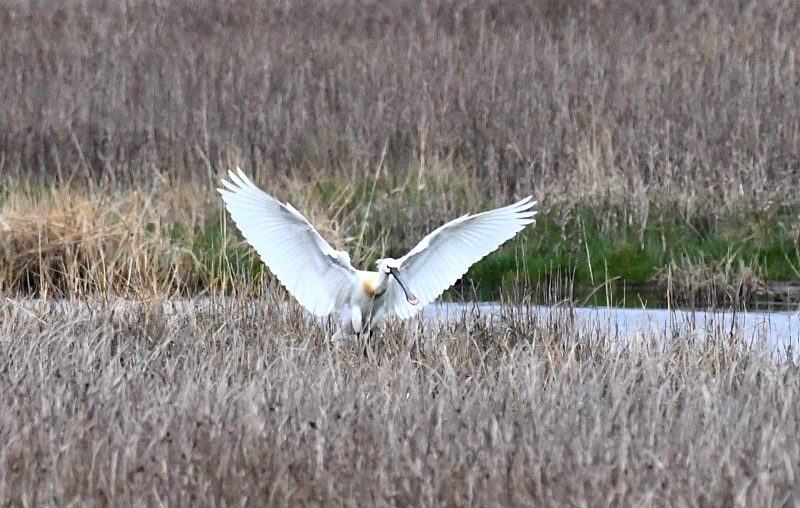
What to expect in May
Spring migration will still be in full swing in
early May, indeed the migration of Whinchats, Whimbrels and Spotted
Flycatchers all peak this month. After a quiet April for waders things
will pick up again with good numbers of Dunlins, Ringed Plovers and
Sanderlings passing through, most of these will be coming up from their
African wintering grounds. For those interested in the different Dunlin
races this is the time to get down to Hoylake and Meols. As described
in my article 'Dunlin - Rings, Races and Genes' (http://www.deeestuary.co.uk/news1220.htm),
May is the time when
we see Icelandic and Greenland breeding Dunlin (schinzii and arctica
races) passing through which are then joined, around mid-May, by bigger
Dunlin of unknown origin (but probably breeding in Siberia). The much
scarcer Curlew Sandpiper may also turn up this month on their way north.
May is often a good month for terns, as well as our
breeding Common Terns and Little Terns there is always a good chance of
seeing Black Terns, as well as rarer species such as the White-winged
Black Tern present at Burton Mere Wetlands in May 2019. In fact May is
often a good month for rarities generally which in recent years have
included Hoopoe, Turtle Dove and Blue-headed Wagtail.
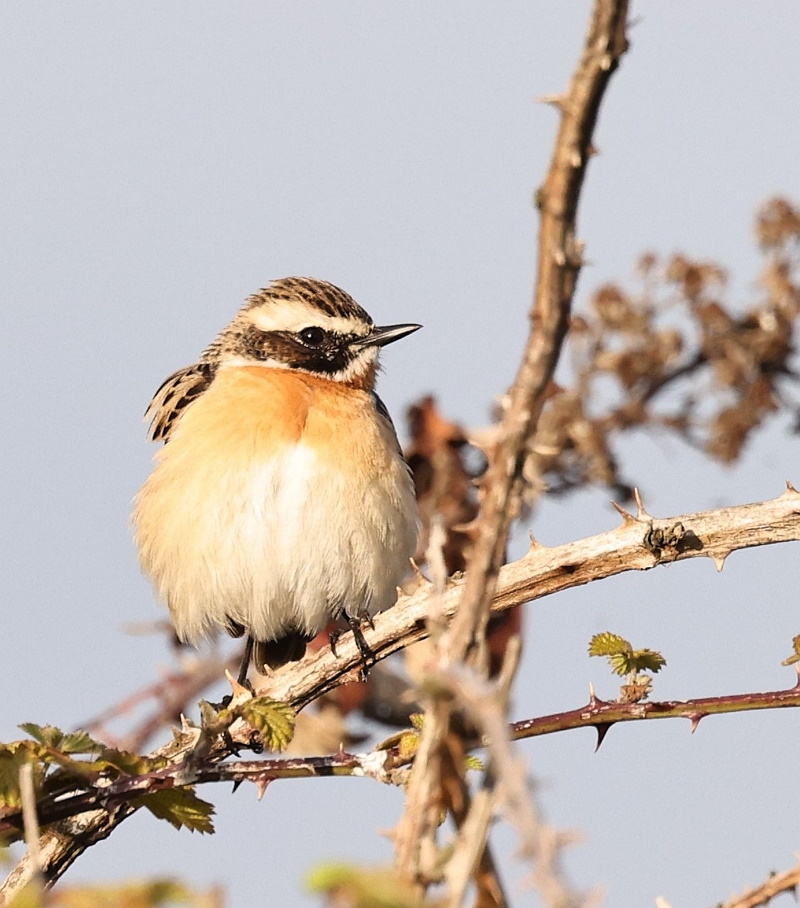
Forthcoming Events
May Highest Spring Tides (Liverpool)
Also see Tides page.
26th May, 11.36hrs (BST), 9.7m.
27th May, 12.24hrs (BST), 9.7m.
Forthcoming Events
Due to Covid 19 restrictions no birdwatching events are planned for this month.
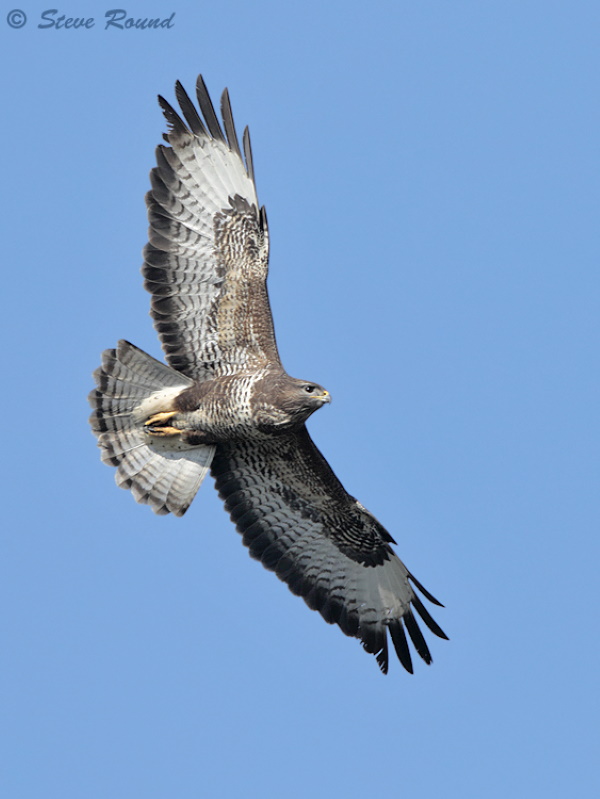
https://www.stevenround-birdphotography.co.uk/